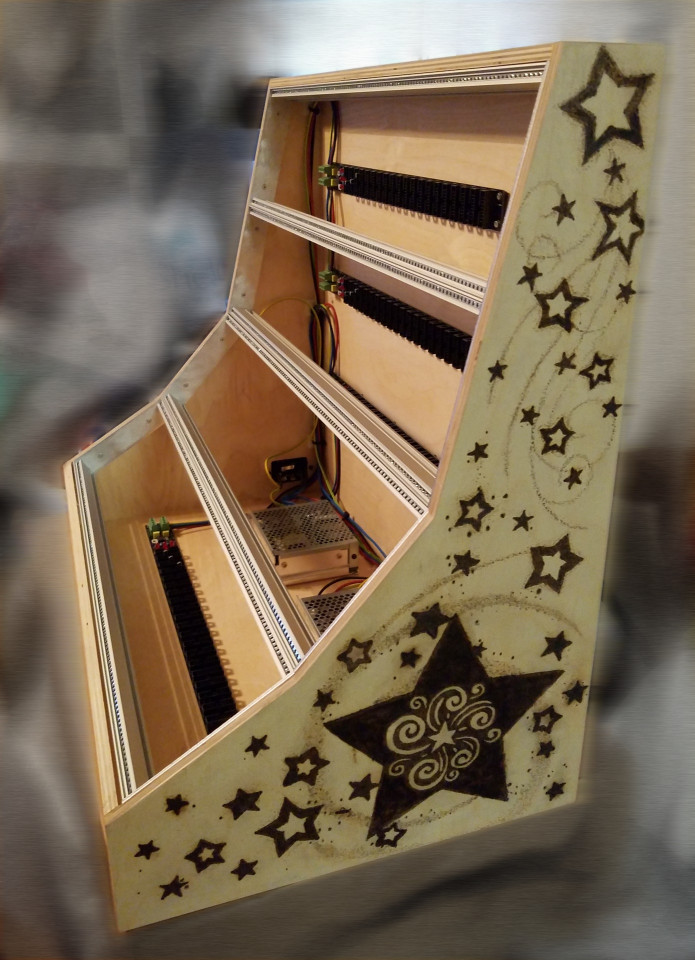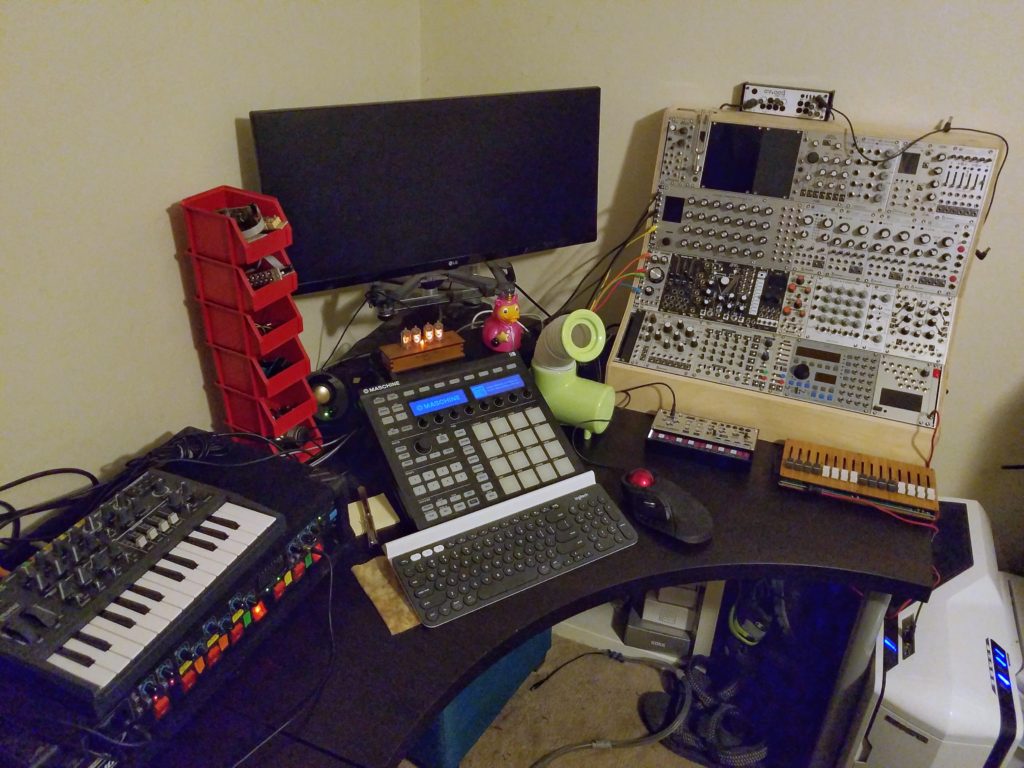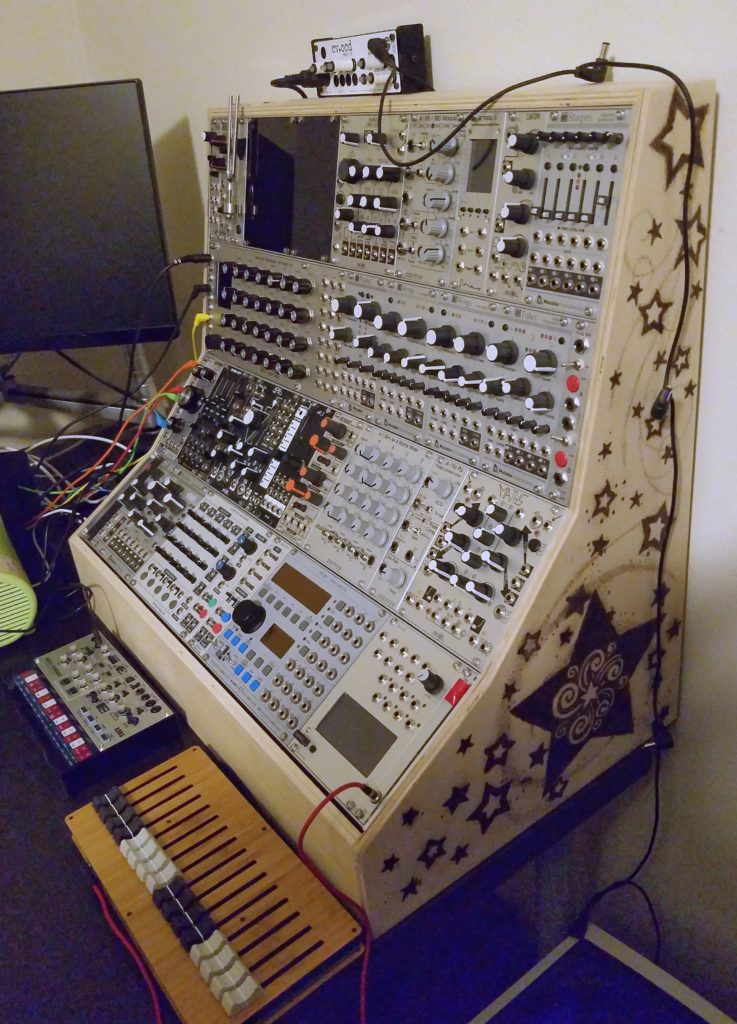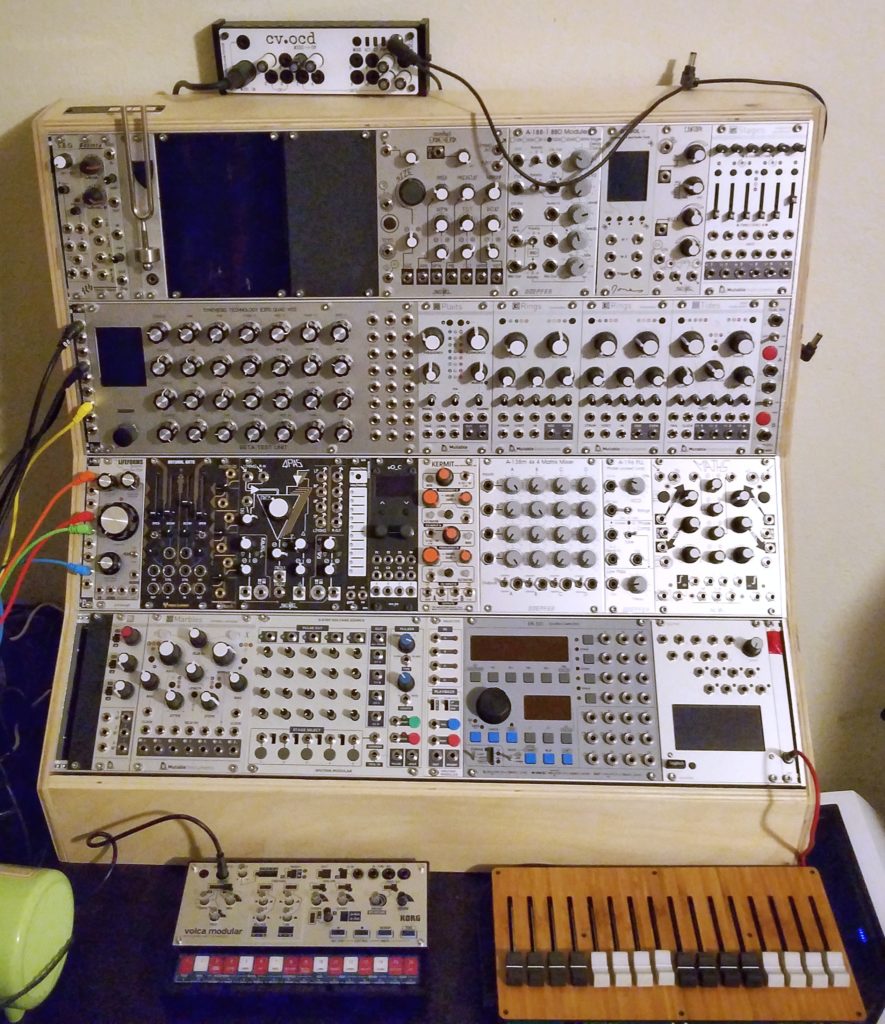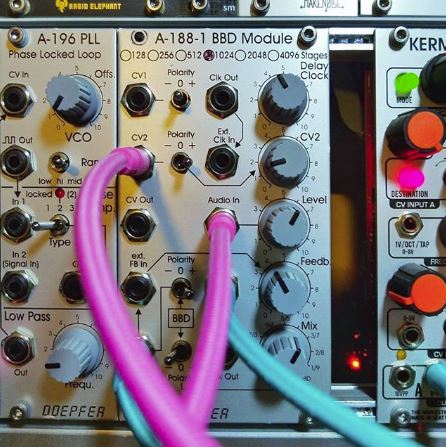The Reface CS is set up and I’ve whiled away a few hours messing around with it. It is indeed fun! The warm fuzzy glowing reviews are only a little overstated. The synth’s limitations as I see them are:
- There doesn’t seem to be any internal limiting/saturation keeping levels sane; the max volume setting for normal synthesis turns into clipped mush if you make the filters self-oscillate. There might be some DC offset or something eating into the headroom too, because it doesn’t sound all that loud… this isn’t too serious a problem, just a matter of a bit more tweaking while working with it.
- I hate to sound like the people who claim that digital isn’t as “warm” or as capable of solid bass as analog is, but this particular synth does not have much bass junk in its trunk. This is something I can compensate for, where it matters — but I’m more inclined to use it for what it is natively great at instead.
- The controls are steppy, in the manner of 7-bit MIDI CCs. This is only an issue when trying to slightly offtune filter resonance (a trick I like with Roland SH-101 and clones) and a pretty serious lack of precision in the ringmod oscillator type.
- The second slider in FM mode adds noise to the mix as well as changing the ratio. This can sound good, but isn’t a choice I would have made.
- The pitch bender seems to have some built-in slew that I’m not sure I like. Doesn’t really matter much to me since I rarely use pitch bend and almost always edit automation curves for it when I do.
That aside, it is really good at some things. Especially supersaw pads with the phaser lending it a lush 70s “string machine” sound, “singing” organ-like tones with the filter resonance, and some unusual tones with the sync, ringmod and FM types. Right now I feel like I’m going to need to rotate and jiggle things to get the Reface to fit in with my vibe — but that’s a challenge I welcome. The keyboard feels better to me as a controller than the Microbrute.
I dug up my “DJ” “laptop” stand and have the Microbrute hovering above the Reface, but unless I want to steal an input from the modular, right now I can’t use them both simultaneously. I had a dodgy little analog-to-SPDIF converter that theoretically should work with my audio interface, but Maschine has a max of 8 inputs anyway for some reason. If, over time, I find I’m just not using one or the other of the keyboards I’ll likely move it upstairs to the Jamming Room.
Those headphones at work are just not getting better. I can listen to some things without too much disappointment, but others I really can’t — and it just feels like I’m wearing buckets on my ears. I get why people called headphones “cans” back in the day when they were all closed-back liked this.
But all will be well. My favorite pair of headphones, which I’ve used at home for years now for music production and everything else, is the Superlux HD688B with a velour ear pad replacement. If I spent 6 times as much I might get slightly more accurate sound reproduction, but I’m totally used to these. Well, I found a barely-used pair with the pads already replaced, and also a tiny Bluetooth receiver I can attach right to the thing and stay wireless at work.

I’ve finished a first skim through the big Curtis Roads book, and gleaned a few things I might want to play with in the future. I’ll do another pass just to make sure I’m not missing anything since I don’t need to return it for another month. A lot of the book covers material I’m already familiar with, or am not interested in personally working with, and a lot of it is oriented toward academic experimentation and technologies from the 90s and earlier. Overall it was worth looking at but I’m glad I didn’t pay full price to own my own copy.
While I’m overall not planning on doing more buying/selling until after Knobcon at least, I don’t think I said anything about trading. 😀 I went ahead and put up a very specific “have these, will trade only for these” list, and as I did it, realized I kind of miss the Three Sisters filter. Its general sound was my favorite among them, it’s straightforward yet has a few neat tricks, and does FM and self-oscillation really well. I’ve got a potential trade lined up for my QPAS, and if that goes through I’ll just stick with that for my filter needs.

